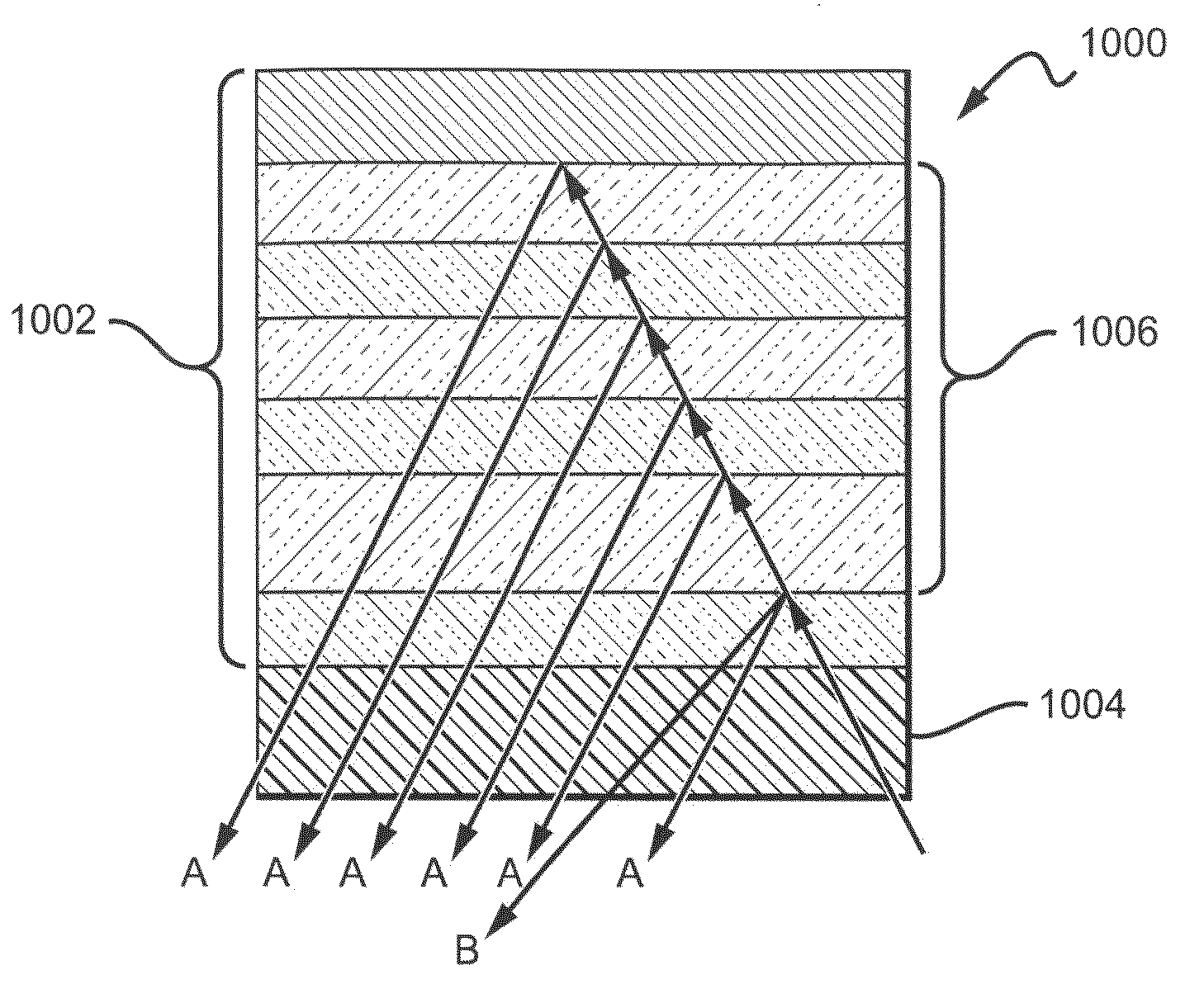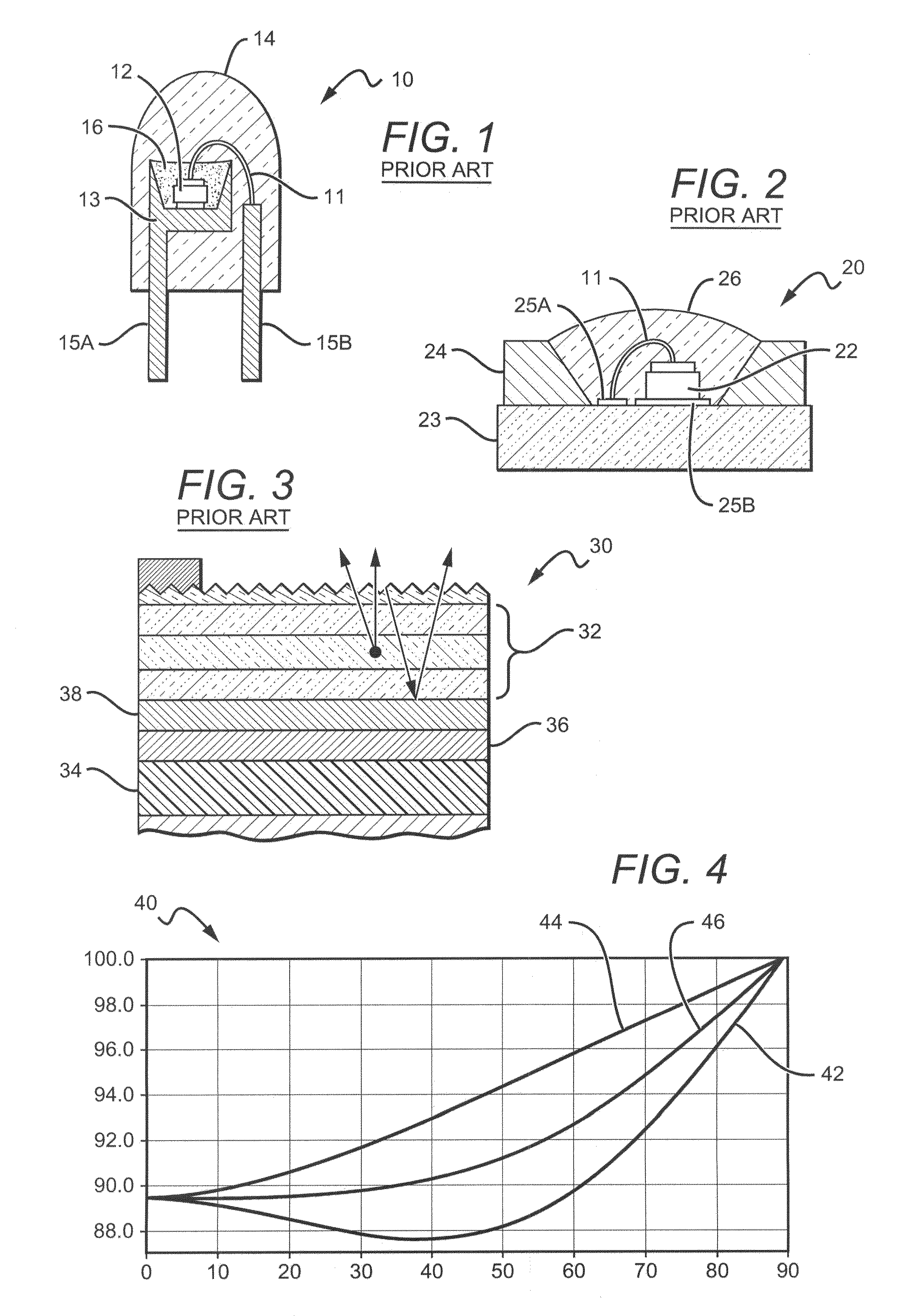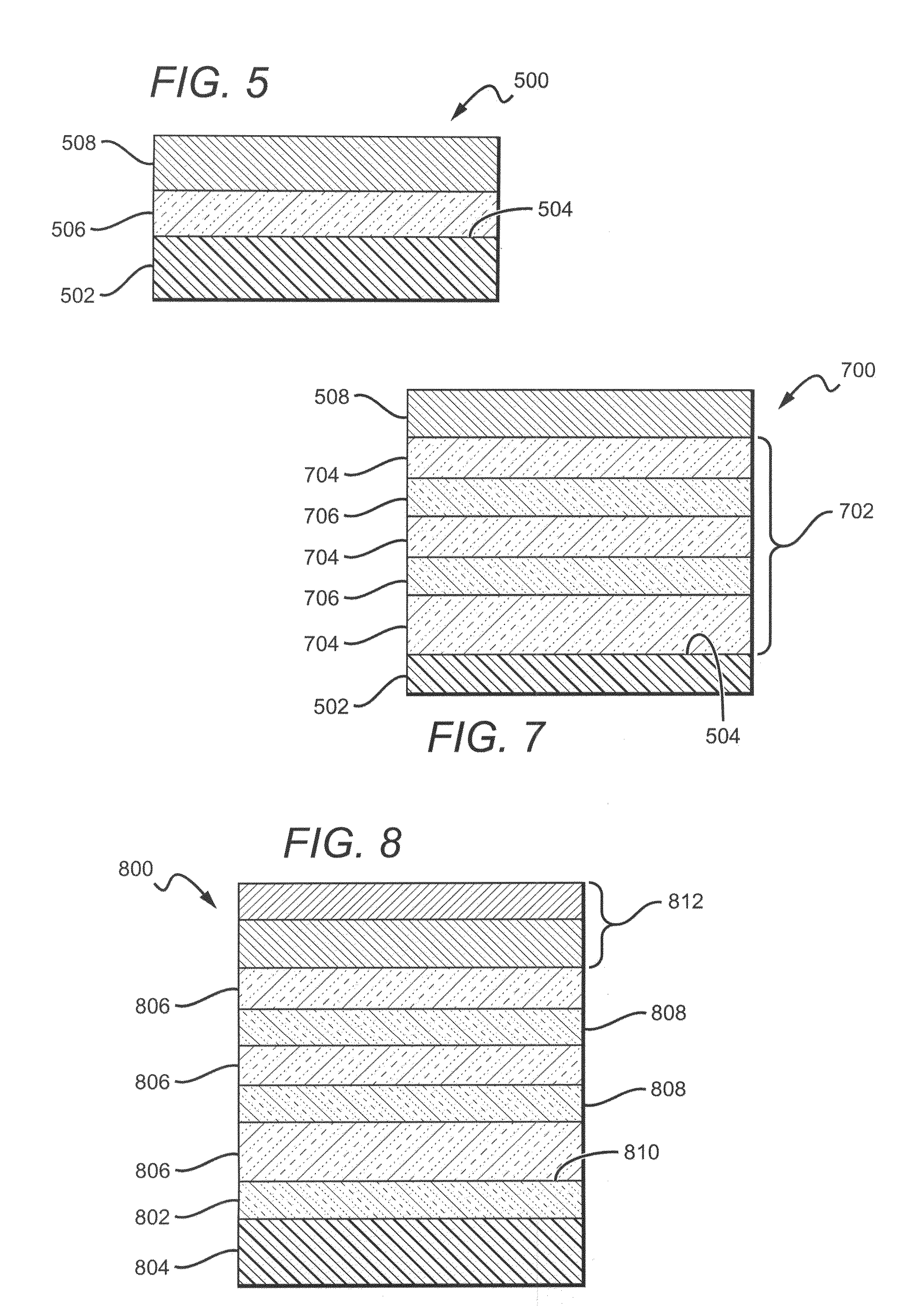High reflectivity mirrors and method for making same
a high reflectivity, mirror technology, applied in the direction of instruments, optical elements, coatings, etc., can solve the problems of 5% or more of light being lost (i.e., absorbed) on each reflection, and the quantum efficiency of external reflection can be limited,
- Summary
- Abstract
- Description
- Claims
- Application Information
AI Technical Summary
Benefits of technology
Problems solved by technology
Method used
Image
Examples
Embodiment Construction
The present invention as embodied in the claims is directed to composite high reflectivity mirrors (CHRMs) with at least one relatively smooth interior surface interface. CHRMs are particularly well-suited for use in solid state light emitting devices such as LEDs or laser diodes. CHRM devices are discussed in detail in U.S. patent application Ser. No. 12 / 316,097 by Ibbetson, et al. which is commonly assigned with the present application to Cree, Inc., and which is incorporated by reference as if fully set forth herein. The CHRM materials may be used as contacts or layers arranged within the emitter devices to increase emission efficiency. Embodiments of the present invention are described herein with reference to LEDs, but it is understood that the concepts are equally applicable to other types of emitters. Embodiments of the present invention can be used as reflectors in conjunction with one or more contacts or can be used as a reflector separate from the contacts.
The improved ref...
PUM
 Login to View More
Login to View More Abstract
Description
Claims
Application Information
 Login to View More
Login to View More - Generate Ideas
- Intellectual Property
- Life Sciences
- Materials
- Tech Scout
- Unparalleled Data Quality
- Higher Quality Content
- 60% Fewer Hallucinations
Browse by: Latest US Patents, China's latest patents, Technical Efficacy Thesaurus, Application Domain, Technology Topic, Popular Technical Reports.
© 2025 PatSnap. All rights reserved.Legal|Privacy policy|Modern Slavery Act Transparency Statement|Sitemap|About US| Contact US: help@patsnap.com



